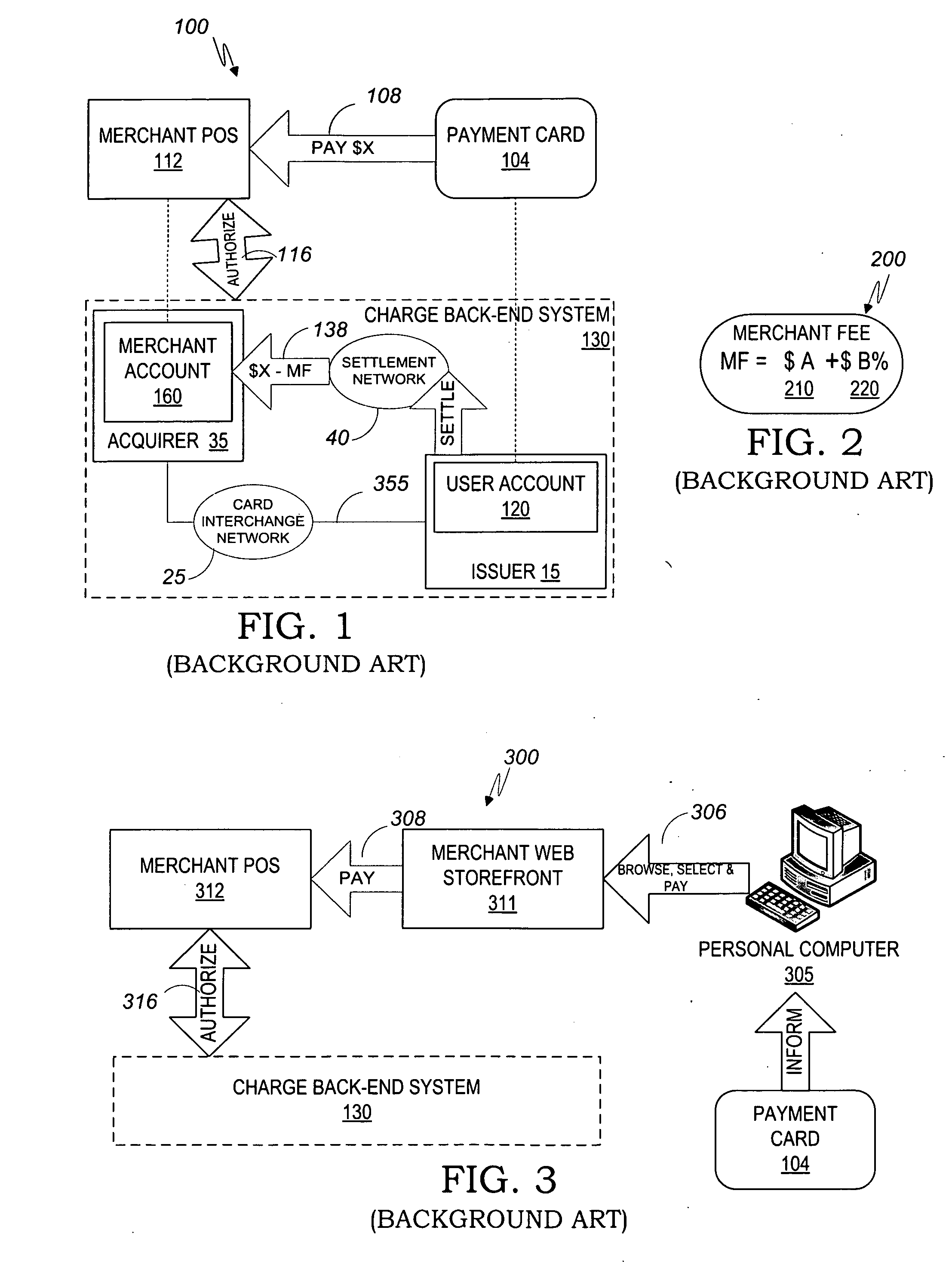However, when the price of the good or service being sold is small, the fee incurred by the merchant accepting the card as a payment instrument can be in excess of 10% of the value of the transaction because the fixed factor 210 becomes preponderant, thus making card payments non viable for small-
ticket low-margin commerce.
Such verifications by the merchant are not available during an online purchase, thus increasing the risk that the card involved may not be legitimate or may have been stolen.
While such
system may be optimized for card-present transactions, it remains highly impractical for remote on-line transactions as the stored value of the
chip in the
smart card has to be connected to the PC of the user through a specific reader and associated
software.
The merchant incurs a risk of not being paid as long as the cumulative amount of transactions has not reached the threshold for triggering an
authorization request to the charge back-
end system.
General limitations and drawbacks of systems listed above include:
Generally, intermediary-account micro-payment systems face the limitation of getting consumers to register with a dedicated account which can only be used at a limited number of participating merchants.
Such limitation can only be overcome by a huge marketing expenditure to attempt to
gain recognition as a new acceptance brand separate from existing mainstream card payment systems or cash.
They have thus encountered considerable obstacles to adoption.
Acceptance-side systems relying on distribution of disposable gift cards face the obstacle of getting consumers to buy the card at participating retailers while content is sold at another location, namely the digital merchant's web-site.
A limitation of all systems listed above, with the exception of merchant gift cards, lies with the inability of teen-agers, who are the most prone to making small-value purchases given their limited spending power, to use such systems because they are generally unbanked and have no credit cards;
Acceptance-side systems implementing micro-purchase protocols in order to aggregate transactions behind-the-scene and across multiple merchants have the drawback of losing the detailed history of individual payment transactions with individual merchants, when the statement of past transactions is provided to the payer for review, thus making subsequent potential disputes difficult or impossible to
handle.
Posting the aggregated amount on the payer's statement under a dedicated brand name, for example with an optional
Internet address to access transaction details, is also very confusing as this brand name was invisible to the payer at the time of the transaction.
In some cases, such cross-merchant aggregation is also considered to create the notion of a “super merchant” and is considered to be against the rules of certain mainstream payment systems.
Systems based on aggregation strategies are exposed to the natural failure of reducing the fees incurred by the merchant and / or the cost of funding incurred by the payer when a single low-amount transaction is carried out and no aggregation can take place.
However, such systems only solve the problem of teen access to money that can be spent online; they do not alleviate the problem of the high fees associated with small-value card-non-present purchases because they don't feature any micro-payment capabilities.
Attempts to perform transaction aggregation at one or across multiple merchants incur an additional hurdle when the payer is a teen equipped with a prepaid
debit card.
As these cards usually carry a small balance, the merchant or third-party payment provider runs a high risk of seeing the transaction being declined when the aggregated amount is presented to the payment network.
 Login to View More
Login to View More  Login to View More
Login to View More 


